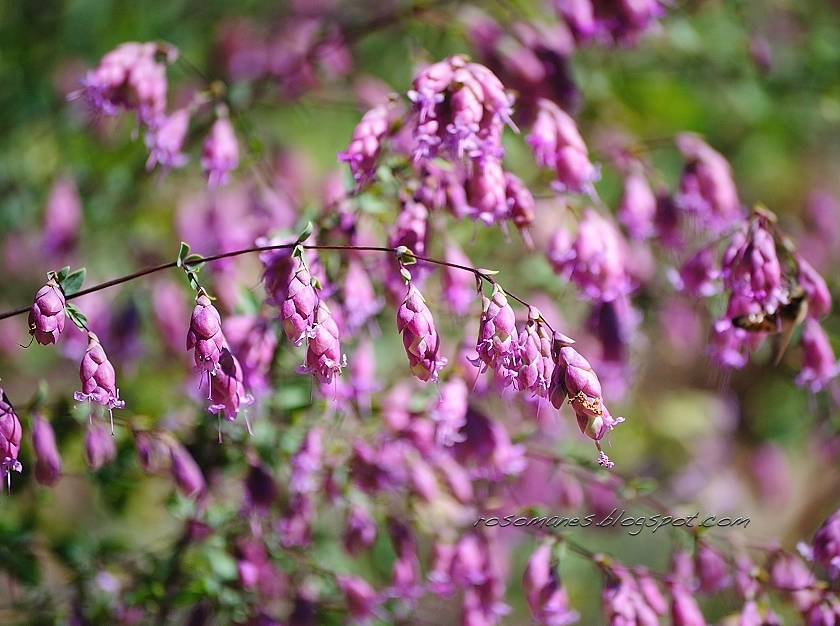To mark the end of summer, we spent last Saturday at Berkeley. My boys had a lot of fun building Lego racers at the Lawrence Hall of Science, while I spent the afternoon at the University of California Botanical Garden nearby. The garden spans 34 acres and maintains one of the most diverse plant collections in North America.
There is a big display of carnivorous pitcher plants greeting visitors at the entrance.

Are they there as a reminder not to linger at closing time? Or as a warning not to stray off the paths?
Turning away from the pitchers I was dazzled by a fountain of xanthorrhoea glauca surrounded by aloe and cycads. It is not often that one sees so much spiky foliage massed to such great effect.

I was fascinated by the symmetry of succulents and by sunlight streaming through the leaves.
But however perfect their geometrical shapes, I can't say I feel at home with such spiny plants.
So it was a relief to leave the New World desert behind and see some cheerful kniphofia blooms in the South African collection.
Hummers liked them too.
I wish I could show you all the amazing exhibits that I saw, but this post is already getting too picture-heavy.
One of the plants I fell in love with was an ornamental oregano (below). It looks somewhat like heather but, like many Mediterranean plants, prefers hot and dry conditions. The only plant of it they had at the propagation shop went home with me (as did a mite-resistant fuchsia).
But the best was still to come. At the very edge of the garden there is a small collection of old roses.
Some better-known cultivars from the 19th and early 20th century are blooming here along lavender-edged paths.

The roses were all well known to me but what attracted me was the choice of companion plants. The garden seemed to rely heavily on annuals, with cleome, sweet peas and cosmos scattered widely among the roses.

I can see the benefit of having a few young and energetic college students on hand to plant the flowers anew year after year.

Some of the combinations were pretty unusual, such as a phytolacca icosandra with Fellemberg (below). Their color is almost identical which made the difference in their shapes even more striking.
After so much colorful wonder it was nice to sit down and contemplate a soothing and unsurprisingly traditional combination of Marie Pavie and lavender.
And listen to the birds. It felt like home.
 |
| A peaceful view of the San Francisco Bay through a picturesque tangle of hollyhocks, cosmos and cleome |

Are they there as a reminder not to linger at closing time? Or as a warning not to stray off the paths?
 |
| Venture off the path and you might be impaled too. The collection of cacti is vast. This one is a cleistocactus buchtienii. |

I was fascinated by the symmetry of succulents and by sunlight streaming through the leaves.
But however perfect their geometrical shapes, I can't say I feel at home with such spiny plants.
Even when they look like a muscle man at a body-building contest.
 |
| Pachypodium lamerei |
So it was a relief to leave the New World desert behind and see some cheerful kniphofia blooms in the South African collection.
Hummers liked them too.
I wish I could show you all the amazing exhibits that I saw, but this post is already getting too picture-heavy.
 |
| A summer blooming aloe mitriformis/perfoliata whose leaves acquire a red tinge in dry conditions |
 |
| Origanum Sipyleum |
But the best was still to come. At the very edge of the garden there is a small collection of old roses.
 |
| A big arbor with Lamarque |

The roses were all well known to me but what attracted me was the choice of companion plants. The garden seemed to rely heavily on annuals, with cleome, sweet peas and cosmos scattered widely among the roses.

I can see the benefit of having a few young and energetic college students on hand to plant the flowers anew year after year.

Some of the combinations were pretty unusual, such as a phytolacca icosandra with Fellemberg (below). Their color is almost identical which made the difference in their shapes even more striking.
After so much colorful wonder it was nice to sit down and contemplate a soothing and unsurprisingly traditional combination of Marie Pavie and lavender.
And listen to the birds. It felt like home.
 |
| Western scrub jay |




































